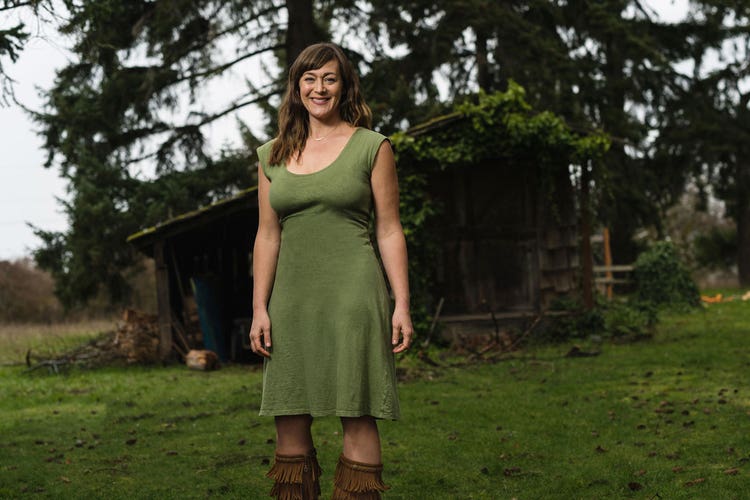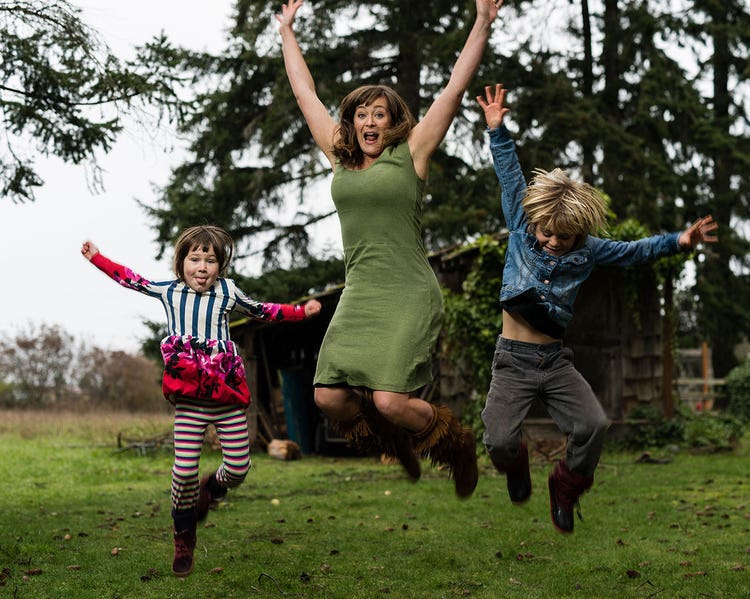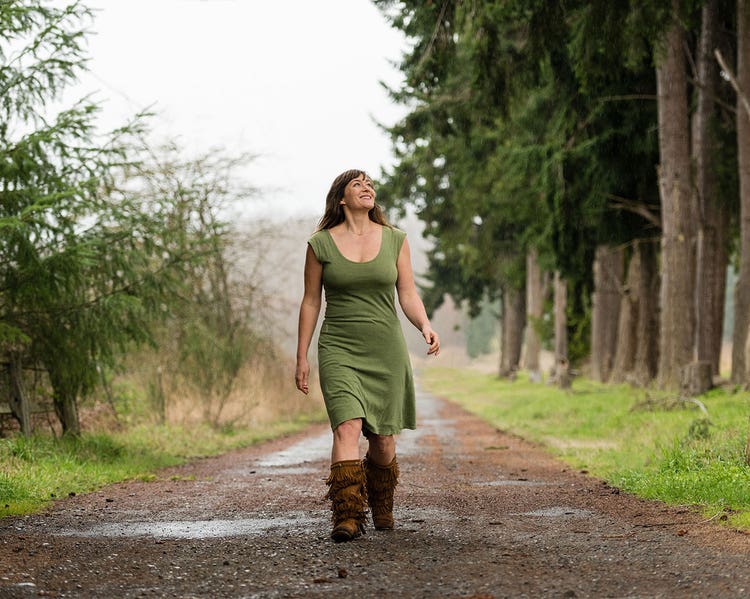Stack Your Life and Start a Movement With Katy Bowman

Walking to high school would not have been Katy Bowman’s first choice. She readily describes her family as sedentary and herself as a bookworm. But she had to do it—and that walk was the catalyst for Bowman’s journey to become a biomechanist who is renowned worldwide for her revolutionary perspective on movement.
In her recent book “Movement Matters” (Propriometrics Press, 2016), Bowman defines movement as anything that changes our shape, and she calls for us to add movement, not just exercise, to our days. And in fact, our environment and access to movement creates an ecology of sorts. Bowman observes that some people have time and resources to devote to an hour in the gym or on the trail, slopes, lake or ocean—and other people don’t have the means to move where and when they choose.
Life stacking vs. life hacking
Life stacking is different from multitasking. Bowman compares it to permaculture, where your garden is more than a collection of pretty shrubs, grass and flowers: The garden’s siting and all its components, from the soil and drainage to the proximity of certain plants to one another, create a self-sustaining environment. Life stacking is about combining activities to accomplish more than just those individual actions.

Bowman recalls her first big life-stacking moment after the birth of her son, Finn. She’d always enjoyed exercising when she wanted, for as long she wanted. Suddenly when she most needed to be able to move for strength and stress relief, she couldn’t. “At the same time, I wanted to be with my children,” she says, “so I had this internal conflict: Whose needs get to be tended to, mine or theirs?” It didn’t make sense to Bowman, in light of the history of human physicality, that a new parent would be required to stop moving.
“[That’s] when I realized that I had a 20-pound training program,” Bowman says. “At first, I couldn’t see carrying my child as exercise. It didn’t fit the conventional definition of exercise. Then I thought, ‘I’m going to pick up this baby and we’re going to run this errand, and I’m going to do it on foot and I’m going to do it with him in my arms.’ I found out very quickly that I had access to a workout that never ended.”
Bowman says she and her husband, both former athletes, found they were stronger at 40 than they were at 25. She says it was eye-opening when a well-muscled dad at the playground asked how they managed, exclaiming, “I can’t carry my kids [like you]—it would kill my back!”

Redistributing movement
In “Movement Matters,” Bowman notes that opting for convenience—even using a tea bag or a smart key fob—often eliminates movement from our lives, even if they’re small actions like emptying and washing a tea strainer or walking around the car to unlock the door with a key. “We go to physical therapy later to practice movements like turning our wrists,” she adds. “What if we [equated] convenience with taking less movement instead of taking less time?”
Convenience doesn’t really save time as, at the end of the day, we still have all of our body parts to move. Convenience merely compresses our bodies’ need for movement into hours placed onto an end of the day. With life stacking, Bowman is proposing redistributing that need for movement—and the movement itself—back into our day. Sometimes it’s simply a change in mindset: “If you decide to get on a bicycle and ride for 10 miles to improve your physical well-being, that’s exercise,” she says. “You’ve picked your movement mode and the distance or duration. But if you did that same amount of cycling and even took the exact same route in order to get to work, then your movement qualifies as something other than exercise.”

Here are Bowman’s tips for life stacking.
1. Consume “movement vitamins,” just like other nutrients.
“We require more movement than that just enough to improve our outcomes on physical fitness measures. There are types and amounts and distribution of movement throughout your body that add up to something better than consuming one type of movement over and over. You wouldn’t go to a nutritionist who said you just need to eat more to get the nutrients you need.” A nutritionist will often recommend “eating the rainbow” to get more diverse nutrients and along these lines, Bowman suggests “moving the rainbow”—move lots of your parts, in many different ways.
Bowman explains that quality, not just quantity, of movement is crucial. Just like you can become ill if you have too little vitamin D and you can become ill if you have too much, the same goes for too much or too little of just one kind of movement.
2. Sitting is not often required to tend to your needs.
Partner time is just as important as family time, and Bowman and her husband realized that the usual “date night” activities involved sitting. “Sitting down in a dark movie theater to watch something on a screen isn’t even something that we like!” she says. So Bowman and her husband schedule date hikes to talk as they walk and even play—trying to balance on fallen trees. Other things to do or take care of while walking include coffee dates with friends, book club discussions and even conference calls done on the move.
3. Redefine rest.
“It’s a paradox that we have never been as sedentary, and we’ve never really been as under-rested or under-stimulated as we are now,” she says. Bowman points out that we think of rest and recovery in the sense of exercise—not moving but looking at our mobile devices so that our brain never gets a break. “I think we need more movement, and I think we need more rest,” she says, “But we need to define what rest is, in a high-tech society.” Is it lying on the couch, doing a few dozen mind flips with each swipe of a thumb, or is it an easygoing walk on a quiet path?
Bowman recommends taking a break that’s appropriate to the source of stimulation: “Is it negativity on a screen? Is it a person? Is it a way of being? Maybe you take a tech-free Sunday or a screen-free week. You get to define what your own version of rest is.”
4. Move yourself and start a movement.
People often ask Bowman how to get someone else in their life to move more. “There is so much research that says the person you want to move needs to want it himself or herself,” Bowman says. “I think sometimes we don’t move forward because we’re concerned that someone we love is not going to go there with us, so nobody goes.”
“The way you serve that person and yourself (that’s life stacking) is through role modeling … because at least you’re taking care of yourself. And guess what? That person wants to be with you” and just might have to move to do so. When Bowman considers how one person’s momentum can spark action in another, the potential to start a movement is huge.
Photo/video credit: Mark Kuroda, kurodastudios.com
Hair and make-up: Katie Nash, katienashbeauty.com
https://www.youtube.com/watch?v=I3RQqCGZkxY